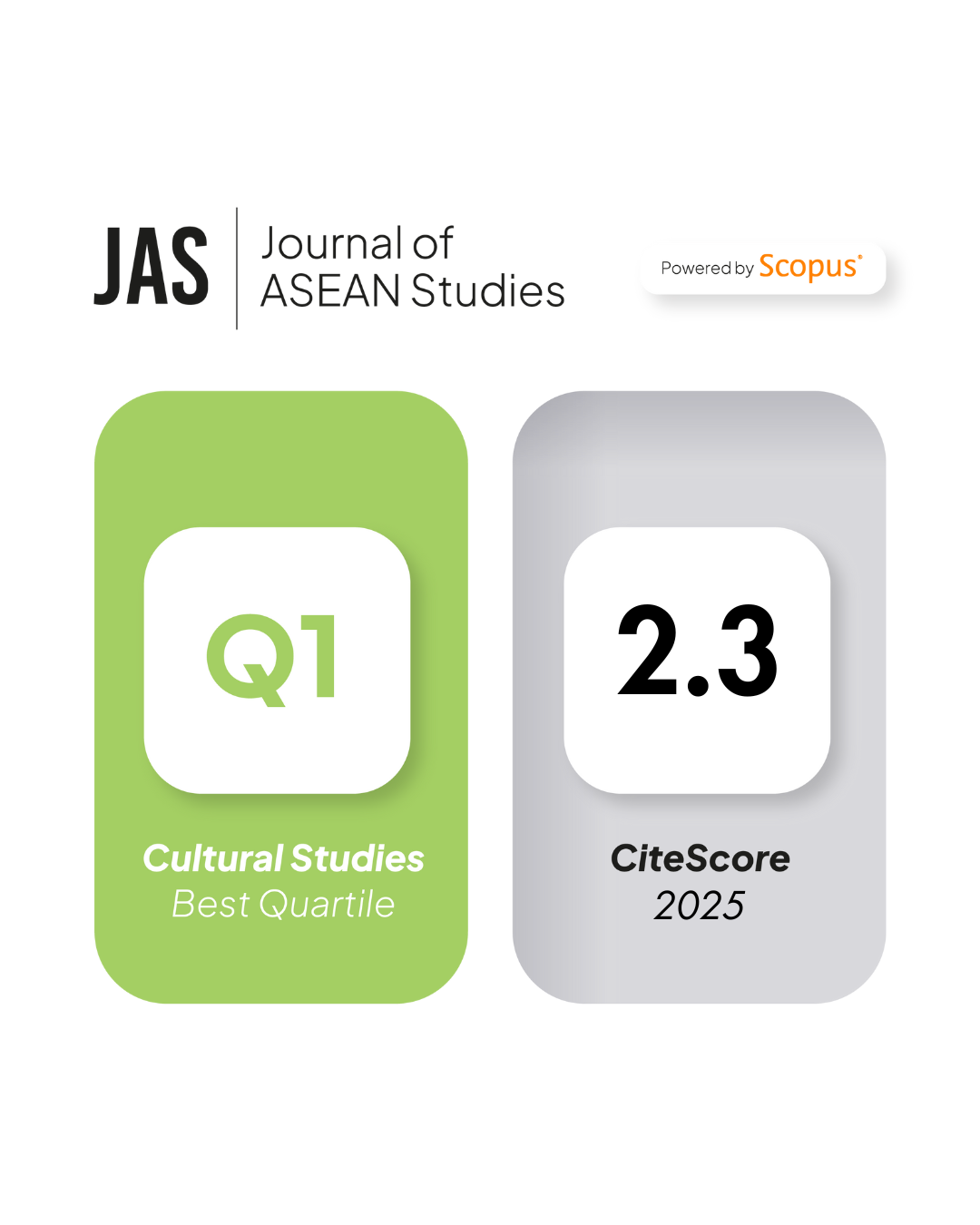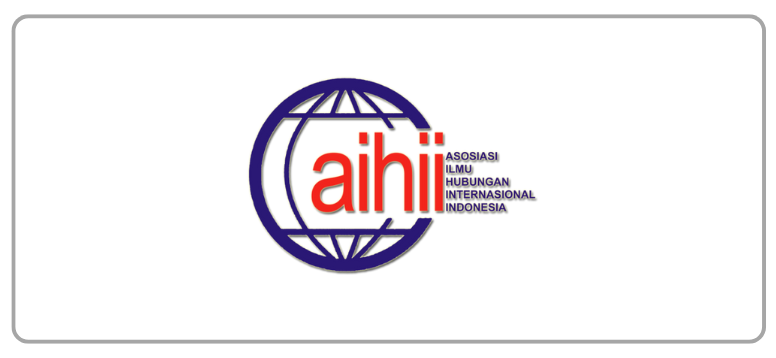Repositioning Indonesia – Thoughts on the Indo-Pacific
DOI:
https://doi.org/10.21512/jas.v7i1.5748Keywords:
Indo-Pacific, the return of history, regional architecture, ASEAN Centrality, and globalization.Abstract
Before considering how best to reposition Indonesia in the world – and I will be looking, in particular, at Indonesia’s current Indo-Pacific initiative - we need to ask how the world itself has been repositioned. The terms of reference for this conference go straight to this second question. They immediately highlight the theme of globalization, noting how it has promoted “growing connectivity among states†and “revolutionized human interactionâ€. How then has this region been reconfigured over the last decades? Until the mid-20th-century the entire Asian region was either under European colonial rule or strong Western imperial influence. That is how the region was structured – with the great centres of power in London, Paris, The Hague and Washington. After the extraordinary conquests by Japan, which effectively ended the Western imperial project, Asia was quickly drawn into the Cold War. Countries lined up as Communist or Anti-Communist, and some tried to sustain a degree of neutrality or equi-distance. At the end of the Cold War, in the last decade or so of the 20th-century, as is often commented, there was a unipolar moment – an America-dominated world with a sense of globalization not merely being economic, but also a globalization of ideas. One commentator wrote of the ‘end of history’ – the US had won, he said, with its liberal democratic ideology. Communism had been annihilated, and Western liberalism had the ‘wind in its hair’. This said, there were still objections. Dr Mahathir in Malaysia and a number of bright Foreign Ministry intellectuals in Singapore spoke of ‘Asian values’. They said you had to understand Asian values to explain the great economic transformation taking place in Asian countries – and there was also a need to respect Asian values in the political arena, and not just insist that all societies must develop in the same way. The democracy, human rights, and other supposed responsibilities of government which Westerners have tended to advocate, it was argued, are not necessarily universal norms.Â
Â
References
Amitav, A. (2014). Indonesia matters: Asia's emerging democratic power (Vol. 1). World Scientific.
Azra, A. (2004). The Origins of Islamic Reformism in Southeast Asia. Crows Nest: Allen & Unwin.
Bowie, N (2018, August 5). â€Indo-Pacific†pitch gets lukewarm reception in SE Asia. Asia Times.
Chongkittavorn, K. (2018, September 3). ASEAN is key to Indo-Pacific: Modi. Myanmar Times.
Cook, E. (2018, February 8). What Does Indonesia’s Own Indo-Pacific Strategy Look Like? The Diplomat.
Heydarian, J, R. (2018, June 28). The Indo-Pacific is no Shangri-La. Policy Forum.
Kausikan, B. (2016). Dealing with an Ambiguous World. Singapore: World Scientific.
Kausikan, B. (2017). Dodging and Hedging in Southeast Asia. The American Interest. Retrieved from https://www.the-american- interest.com/2017/01/12/dodging- and-hedging-in-southeast-asia/.
Laksamana, E. (2018, February 6). An Indo-Pacific construct with “Indonesian characteristicsâ€â€™. The Strategist.
Lee, S. & A. Milner (2014). Practical vs. Identity Regionalism: Australia’s APC initiative, a case study. Contemporary Politics. 20(2), 209-228.
Lindsey, T. (2018). Retreat from democracy?: The rise of Islam and the challenge for Indonesia. Australian Foreign Affairs, (3), 69.
Mahathir. (2018, September 29). Speech text of Dr. Mahathir at 73rd UNGA. New Straits Times Press. Retrieved from https://www.nst.com.my/news/nation/2018/09/415941/speech-text-dr-mahathir-73rd-un-general-assembly.
Milner, A. (2015). Nama, Group-Binding and Moral Balance: Themes and Origins of Malaysian Foreign Policy. Kuala Lumpur: Institute of Strategic and International Studies.
Milner, A. (2016). Will ASEAN Continue to be the Cornerstone of Malaysian Foreign Policy? The “Community-building†Priority. Kuala Lumpur: Institute of Strategic and International Studies.
Milner, A. (2017a). Regionalism in Asia’, in Juliet Love (ed). (2017). The Far East and Australasia 2018. Abingdon and New York: Routledge, 39-48.
Milner, A. (2017b). Sovereignty and Normative Integration in the South China Sea: Some Malaysian and Malay Perspectives, in Lowell Dittmer and Ngeow Chow Bing (eds), Southeast Asia and China: A Contest in Mutual Socialization. Singapore: World Scientific Press, 229-246.
Milner. A (2017c). Culture and the International Relations of Asia. Pacific Review, 30th Anniversary Special Issue, 857-869.
Natalegawa, M. (2017, November 30). ASEAN should step up to promote “Indo-Pacificâ€. Straits Times.
Natalegawa, M. (2018). Does ASEAN matter? A view from within. Singapore: ISEAS.
Pagden, A. (ed) (2002). The Idea of Europe. Cambridge: Cambridge University Press.
Ricklefs, M. C. (2006). Mystic Synthesis in Java: A History of Islamization from the Fourteenth to the Early Nineteenth Centuries. Norwalk, CT: East Bridge Books.
Sachs, J. (2018, October 2). Jeffrey Sachs looks to ‘A New Foreign Policy. MSNBC News. Retrieved from https://www.msnbc.com/morning-joe/watch/jeffrey-sachs-looks-to-a-new-foreign-policy-1334670915895.
Shafie, G. (2000). ASEAN and the New World Order. Bangi: Penerbit Universiti Kebangsaan Malaysia.
Shekhar, V. (2018). Is Indonesia’s ‘Indo-Pacific Cooperation’ Strategy a Weak Play?. PacNet #47.
Thu, L. H. (2019, June 29). The long and winding way to the Indo-Pacific. The Strategist.
Wanandi, J. (2018, May 24). ASEAN deserves central role in Indo-Pacific cooperation. Jakarta Post.
White, H. (2018). The Jakarta Switch. Australian Foreign Affairs, 3.






















